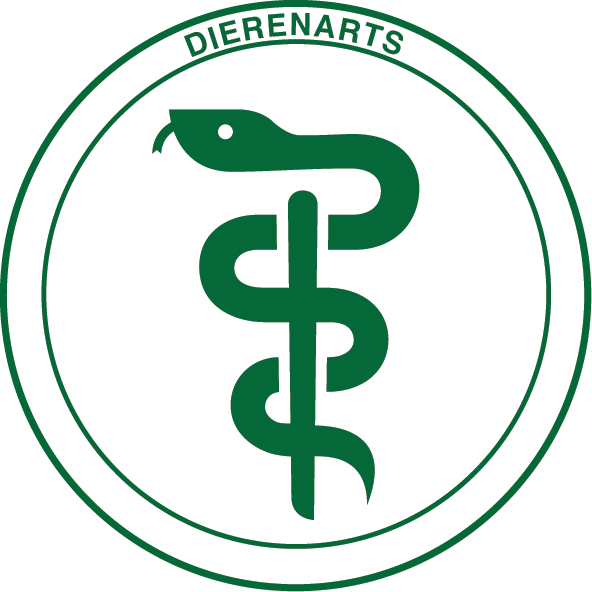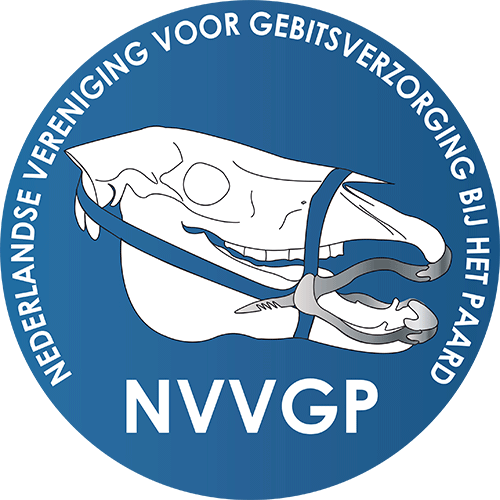Dental Care
Importance of dental care
Dental care is mostly a undervalued part of the general care for your horse. Dental issues usually arise in silence,
causing gradually irreversible changes. That’s the reason why yearly checkups are recommended to prevent future problems.
For younger horses between the age of 2,5 and 4,5 it’s even recommended to do checkups every 9 months, due to the 24 teeth
they are going to change during this period. Changing teeth is one of the causes for starting dental issues. This is
related to the uneven wear of the molar rows, caused by the difference in length of the teeth.
The purpose for dental care can be divided in 2 parts. The first part is taking care of pain that’s caused by dental issues. Dental pain will mostly be discovered in a late stadium because your horse will try to suppress the pain as long as possible. The second part is ensuring an optimal grinding process of the molars. In the case of a disruption in the grinding process, the efficiency of the ration for the horse will decrease considerably together with his well-being and performance.
The purpose for dental care can be divided in 2 parts. The first part is taking care of pain that’s caused by dental issues. Dental pain will mostly be discovered in a late stadium because your horse will try to suppress the pain as long as possible. The second part is ensuring an optimal grinding process of the molars. In the case of a disruption in the grinding process, the efficiency of the ration for the horse will decrease considerably together with his well-being and performance.


Common problems
Down below you find a animation of the most common dental issues. To see the animation click on one of the dental issues in
the left column. Also you will get some additional information about these issues below the animation.
Education and certificates
Veterinarian Laurens Boessen has completed his education at Utrecht University. He has successfully completed the master track
Horse, for which he is now a qualified
veterinarian
, specialised in horses. During his studies, Laurens engaged in internships at several organisations like Horse Clinic Wapenveld
and Veterinary Practice Equide, among others. Both organizations are led by renowned veterinarians, each specialised in equine
dentistry.
Laurens conducted his education as an equine dentist at the practice of Peter Helthuis. This is a very intensive education under direct supervision of Peter Helthuis and his colleague, Roy Ketel. In addition to his work at his own practice, Peter Helthuis is also an Idaho Instructor and Chief Instructor of the Academy BESW Germany.
As a company, Boessen Horses - Dental Care is a member of various organizations, including the Dutch Association of Dental Care for Horses (NVVGP). The NVVGP stands for guaranteeing and improving the quality of dental care for horses.
We are also a member of the Nordic College of Equine Dentistry (NCED). The NCED is an international scientific network within equine dentistry. They facilitate education and networking events for equine dentists and scientists to share knowledge and skills in order to continuously develop the expertise of equine dentistry.
Veterinarian and qualified equine dentist Laurens Boessen attends several conferences/educational trainings every year in order to keep his knowledge and skills up-to-date. As a qualified veterinarian, strengthened by annual further training, Boessen Horses – Dental Care has all the qualifications, knowledge and skills to provide your horse with the best possible dental care!
Laurens conducted his education as an equine dentist at the practice of Peter Helthuis. This is a very intensive education under direct supervision of Peter Helthuis and his colleague, Roy Ketel. In addition to his work at his own practice, Peter Helthuis is also an Idaho Instructor and Chief Instructor of the Academy BESW Germany.
As a company, Boessen Horses - Dental Care is a member of various organizations, including the Dutch Association of Dental Care for Horses (NVVGP). The NVVGP stands for guaranteeing and improving the quality of dental care for horses.
We are also a member of the Nordic College of Equine Dentistry (NCED). The NCED is an international scientific network within equine dentistry. They facilitate education and networking events for equine dentists and scientists to share knowledge and skills in order to continuously develop the expertise of equine dentistry.
Veterinarian and qualified equine dentist Laurens Boessen attends several conferences/educational trainings every year in order to keep his knowledge and skills up-to-date. As a qualified veterinarian, strengthened by annual further training, Boessen Horses – Dental Care has all the qualifications, knowledge and skills to provide your horse with the best possible dental care!
Common problems
Down below you find a animation of the most common dental issues. To see the animation click on one of the dental issues in
the left column. Also you will get some additional information about these issues below the animation.

Description
Click on one of the dental issues to see the description.
A ramp is referred to when an arc-shaped structure runs along the lower / upper molars on the front of the first molar,
or the back of the last molar. In principle, a ramp on the first molar is always accompanied by a ramp on the last molar
in the lower / upper row, and vice versa. Ramps block the chewing motion of the horse and can also lead to problems from
a technical point of view.
A protuberant is a tooth (in this animation a molar) that is longer than the surrounding teeth, and will disturb the
chewing motion.
Sharp enamel points are sharp points that are located on the outside of the top rows (between the cheek and the molars)
and on the inside of the lower molars. (between the tongue and the molars). The sharp points start small at the front
and become larger as you go further back. These sharp points pierce the cheek and tongue and cause painful irritations
in the horse’s mouth. This can result in complaints while riding, but also during eating. In addition to the painfulness,
these points will also disturb the chewing movement of the horse.
With ATR "Accentuated Transverse Ridging" there is a "wave" pattern that is present along the chewing area of the molars.
Because of this undulating pattern, the chewing movement is disturbed.
A wave is a wavy pattern of the entire row. This results in a restriction of the chewing movement.
A diastema (or diastasis) is a space between two juxtaposed teeth in which food can accumulate. When the top of the two
teeth make contact, food will accumulate in this underlying space, which can then no longer be removed. Due to the accumulated
food, the underlying gums will go into inflammation. This is a very painful (and often stinking) process. The horse will
therefore choose to not use this row for chewing any longer.
.svg)
.svg)
.svg)
.svg)
.svg)
.svg)